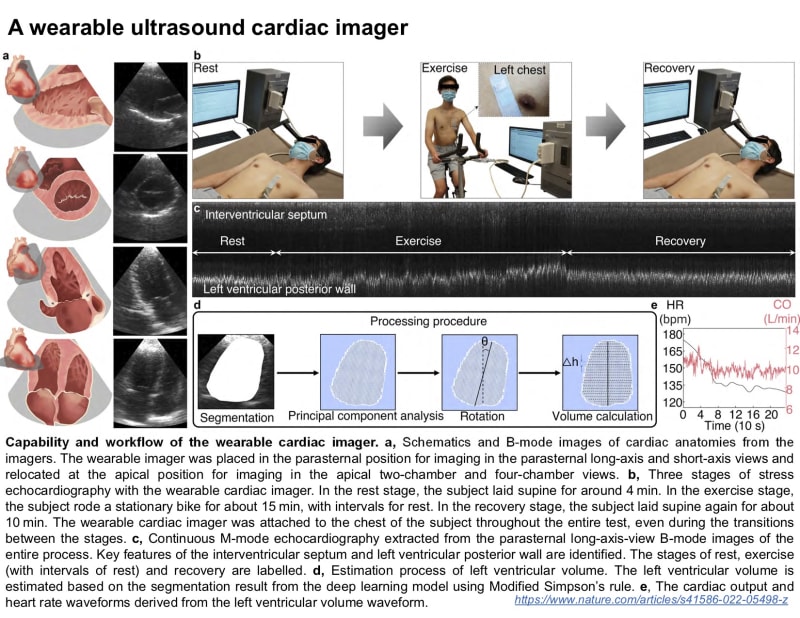
We present a wearable and stretchable ultrasonic imager for continuous, real-time assessment of cardiac function. It maintains functionality even when bent, wrapped around a small object, or subjected to stress, which is unprecedented. The imager's stretchable property ensures seamless contact with the skin, allowing examination of the left ventricle from multiple views, even during motion. Leveraging deep learning advancements, we develop an automated analyzer that extracts left ventricle volume and generates waveforms of important cardiac performance indicators. This imager is valuable for preventive heart monitoring, predicting outcomes during and after cardiac interventions, cutting-edge research, and more.
The imager comprises piezoelectric ceramics transducers, stretchable liquid metal-based electrodes, and liquid metal-based shielding layers. The imager can be simply implemented by dicing the piezoelectric ceramics first and soldering the liquid metal electrodes. The soldering can be done by slightly dissolving the polymer matrix of the liquid metal-based ink and attaching it to the transducers. The liquid metal-based shielding layer can be attached to the electrode as an encapsulation using the same method. To achieve the same functions, copper sheets can replace liquid metal at the sacrifice of stretchability and silver epoxy will be used to solder the electrodes. The device has been demonstrated and published in Nature. DOI: 10.1038/s41586-022-05498-z. The device will need a backend system to properly work. The backend system can be miniaturized into a palm-sized apparatus like the handheld ultrasound machine.
This device can be used in point-of-care healthcare as a wearable. It can capture transient cardiovascular abnormalities and give diagnosis-level descriptions by providing critical cardiac indices. It can be used in high-risk populations like high-BMI people and elders, to reduce the fatality of sudden occurrence of cardiovascular diseases. There is an urgent need for this type of technology to mitigate the medical outcome after the onset of cardiovascular diseases.
-
Awards
-
 2023 Top 100 Entries
2023 Top 100 Entries
Like this entry?
-
About the Entrant
- Name:Hao Huang
- Type of entry:teamTeam members:
- Ray Wu
- Sheng Xu
- Patent status:none


